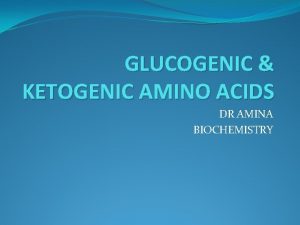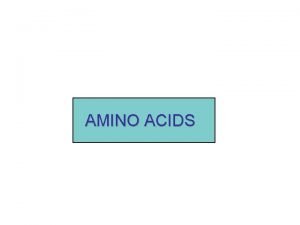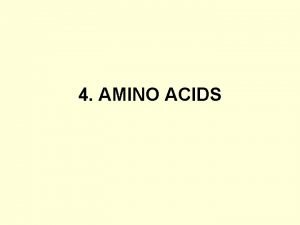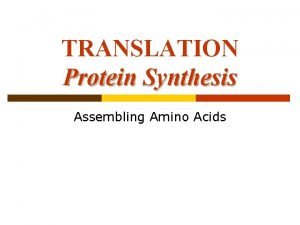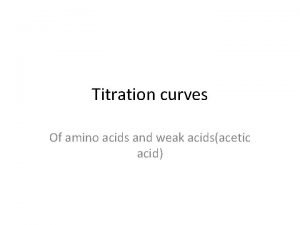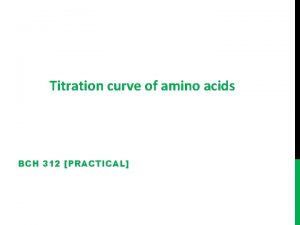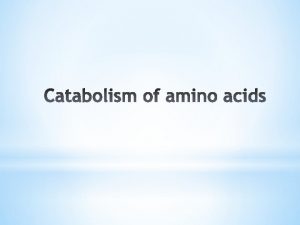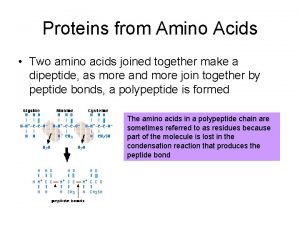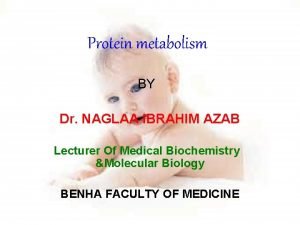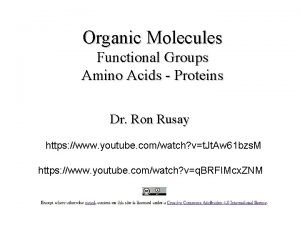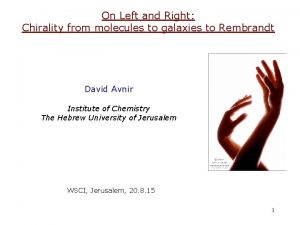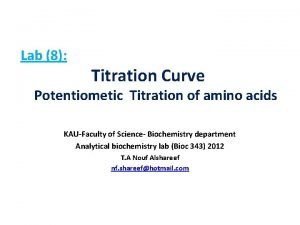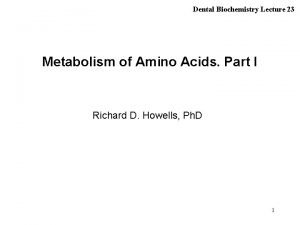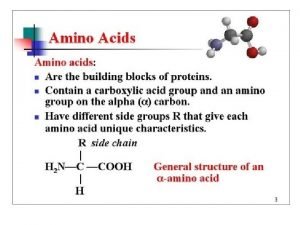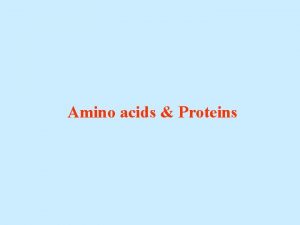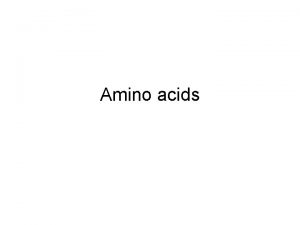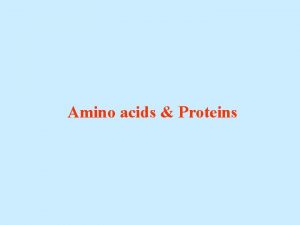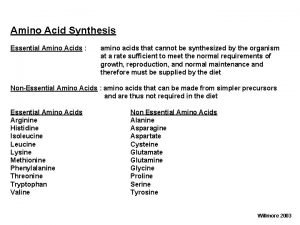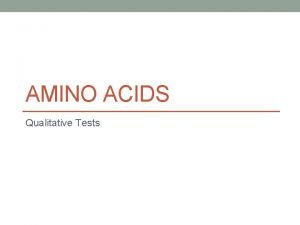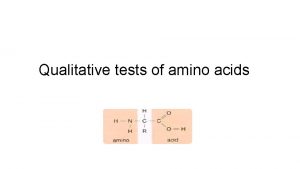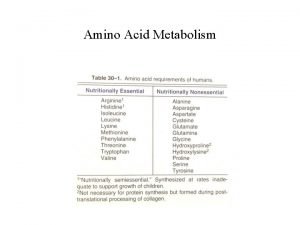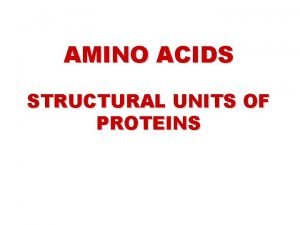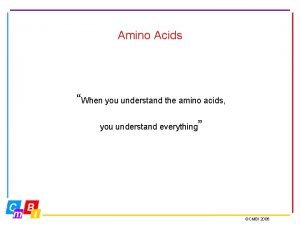Separation and identification of amino acids using paper















- Slides: 15

Separation and identification of amino acids using paper chromatography Kate Andrews Lorraine Bruce

Unit 1 DNA and the Genome 3 Control of gene expression Separation and identification of amino acids using paper chromatography.

Cells and Proteins 2 Proteins Use amino acid chromatography to distinguish between amino acids.

Chromatography Separation of complex mixtures between two phases: – a stationary phase – a mobile phase

Chromatography In paper chromatography : • the stationary phase is a uniform absorbent paper • the mobile phase is the solvent




Safety Solvent ethanol - highly flammable ammonia (. 880) - corrosive, gives off toxic fumes Prepare in fume cupboard. Wear goggles (BS EN 166 3) and nitrile gloves Keep ethanol and prepared solvent away from sources of ignition Pupils wear gloves and goggles when setting up chromatogram Keep solvent away from sources of ignition Keep lid off solvent and chromatography tank for as short a time as possible

Ninhydrin – harmful if swallowed. Skin, eye and respiratory irritant. NOT a carcinogen. Spray in fume cupboard; wear goggle and gloves Some amino acids are irritant and harmful – those in protocol are low risk Risk assessment A risk assessment should be carried out by the technician preparing the chemicals and by the teacher supervising pupils carrying out this activity.




Paper chromatography • Separation of coloured pigments e. g. plant pigments • Separation and purification of proteins from a mixture • Pharmaceutical companies use paper chromatography to analyse different compounds in drugs • Pathology labs use paper chromatography to detect presence/absence of chemicals in blood • Sugars, amino acids, lipids and nucleic acids can be separated and identified by spraying with appropriate reagents

Resources (Prices at December, 2015) From Scientific and Chemical Ninhydrin spray (240 ml): £ 58. 46 Chromatography paper (20 x 20 cm) £ 33. 75 Amino acid kit (contains 20 amino acids) £ 63. 71 From Timstar Capillary tubes (pk 100) £ 3. 64 Chromatography containers 2 L tall beaker (code: BEA 030 080) £ 6. 99 each Scientific & Chemical Chromatography tank (code: CHR 100 010) £ 12. 06 each Scientific & Chemical Chromatography tank lid (Code: CHR 100 500) £ 15. 60 each Scientific & Chemical 3 L Large jar (Le Parfait Orange Top) (Code: 050009784) £ 10. 00 for 3 Asda
 Glucogenic vs ketogenic
Glucogenic vs ketogenic Essential amino acids arginine
Essential amino acids arginine Glucogenic amino acid
Glucogenic amino acid Difference between hydrophobic and hydrophilic amino acids
Difference between hydrophobic and hydrophilic amino acids Codon wheel
Codon wheel Titration curves of amino acids
Titration curves of amino acids Titration curve of amino acids
Titration curve of amino acids Deamination of amino acids
Deamination of amino acids When two amino acids are joined together
When two amino acids are joined together Oxidative deamination of amino acids
Oxidative deamination of amino acids Amino acids groups
Amino acids groups Right handed amino acids
Right handed amino acids N
N Titration curve of glycine
Titration curve of glycine Glucogenic amino acid
Glucogenic amino acid Plp mechanism transamination
Plp mechanism transamination
